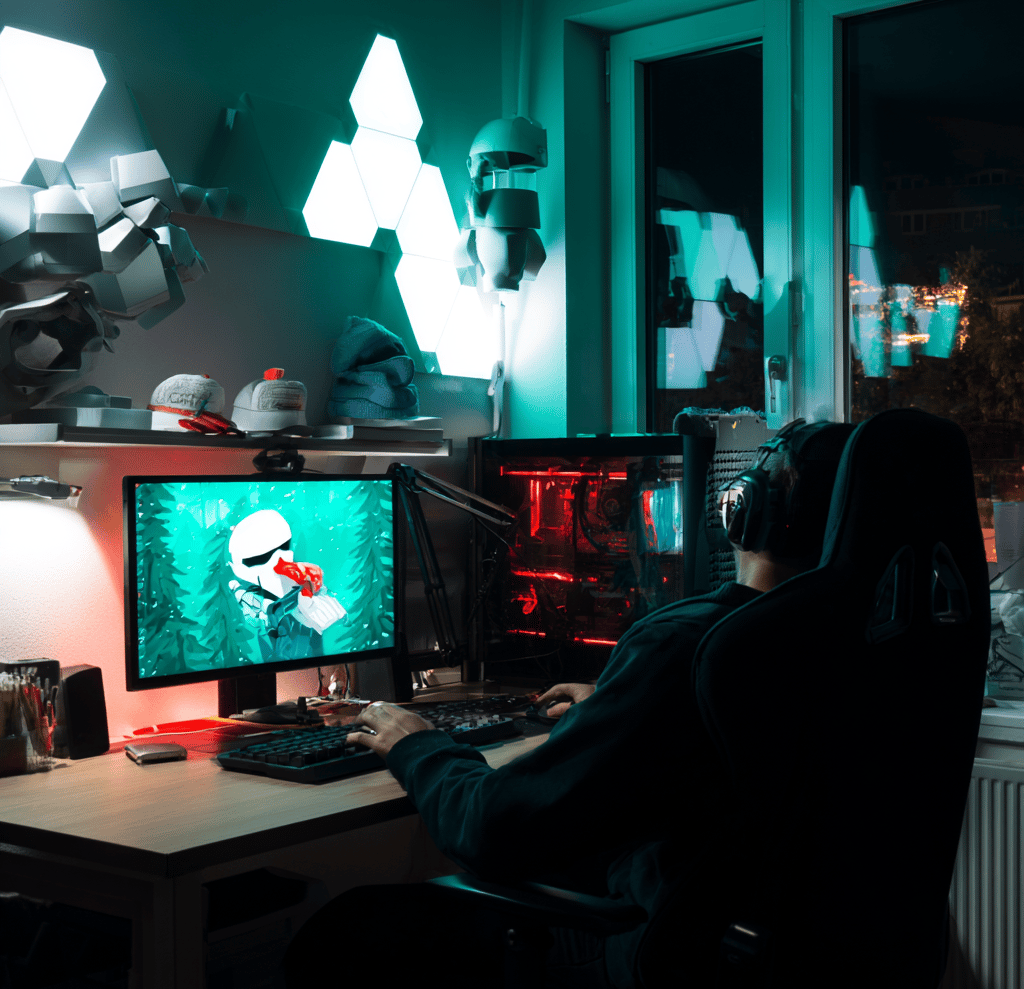How Gamers Are Redefining Productivity Setups
Discover how the advanced hardware, ergonomic design, and customization features of modern gaming setups are revolutionizing professional productivity, transforming desks into high-efficiency command centers for office work, content creation, and software development.
Sid
10/31/20254 min read


The professional workspace has long been associated with sterile, beige equipment designed for function over form and performance. For years, the default for an office desk was a membrane keyboard, a basic mouse, and a standard low-refresh-rate monitor. However, a quiet revolution has been brewing, largely driven by the gaming community. Gamers, with their relentless pursuit of performance, speed, and comfort, have inadvertently established a new gold standard for productivity setups. The high-performance, ergonomic, and intensely customizable gear once relegated to late-night raids and competitive leagues is now crossing the aisle, becoming the cornerstone of the ultimate professional workstation. This convergence is not just about aesthetics it is a fundamental shift in how we approach efficiency and long-term comfort at the desk.
At the heart of this shift is an appreciation for high-quality input devices. The average office worker spends hours a day typing and navigating, yet the tools for these essential tasks have often been an afterthought. Gamers changed this, demanding precision and tactile feedback. Mechanical keyboards, for instance, are the most prominent import. The distinct click or satisfying thud of mechanical switches offers superior tactile feedback compared to their mushy membrane counterparts. This feedback leads to more accurate typing and, for many, a more enjoyable and less fatiguing experience over long periods. Beyond the feel, many gaming keyboards offer N-key rollover, ensuring every keystroke is registered, a feature that translates directly into faster, error-free data entry and coding. Professionals are now custom building their keyboards, choosing specific switch types that perfectly match their desired typing feel and acoustic profile, turning a mundane office tool into a personalized performance instrument.
Similarly, the gaming mouse has left its mark on desk setups. Designed for lightning-fast reflexes and pixel-perfect aim, gaming mice boast high DPI (dots per inch) sensors that offer unparalleled precision and responsiveness. This precision is invaluable for graphic designers, video editors, and CAD engineers, where minute movements dictate professional quality. Crucially, many gaming mice are also equipped with programmable side buttons, turning a simple clicking device into a workflow tool. Users are mapping these extra buttons to complex shortcuts, macros, and frequently used commands like "Save," "Copy," or "Paste," or even launching specific applications.9 This simple act of offloading functions from the keyboard to the mouse significantly reduces hand travel and mouse clicks, adding up to immense time savings over the course of a work week. Furthermore, the advanced ergonomic design of high-end gaming mice is a welcome relief for those struggling with repetitive strain injuries, as these devices are built for sustained comfort during marathon sessions.
The technological leap in displays, fueled by the gaming industry, is arguably the most beneficial to productivity. Gamers demand high refresh rates and low response times for a smooth, lag-free experience. While a high refresh rate might seem overkill for a spreadsheet, the resulting smooth motion and reduced eye strain are palpable benefits for anyone staring at a monitor for eight or more hours a day. More significantly, the popularity of ultra-wide and curved monitors among gamers has found a perfect use case in the office. These expansive displays effectively replace a cumbersome multi-monitor setup with a single, unbroken workspace. This allows software developers to view entire code bases, financial analysts to monitor massive spreadsheets, and video editors to see their timeline in its full glory without bezels breaking up their view. The increased screen real estate enables seamless multitasking and organization, transforming the digital desktop into a high-efficiency command center.
Perhaps the most inventive adoption of gaming tech is the repurposing of the Stream Deck and similar macro pads. Originally conceived to help streamers manage their live broadcasts with a tap (switching scenes, playing music, or triggering alerts) these devices have become the ultimate productivity sidekick. Professionals now use them to automate complex, multi-step workflows. With a single, labeled LCD button press, a Stream Deck can launch a morning routine (open email, Slack, and the daily planner), mute the microphone and toggle the camera during a video conference, or run intricate scripts for data analysis. It provides an intuitive, tactile interface for tasks that would otherwise require multiple clicks, window switching, or hard-to-remember keyboard shortcuts. This level of quick automation is rapidly being integrated into professional workflows for architects, coders, and project managers alike.
Beyond the hardware, the mentality and culture of the gaming world are also seeping into the professional sphere. The practice of customization and optimization, fundamental to a gaming rig, is now applied to the workspace. Gamers tweak every setting, from graphic quality to input lag, for optimal performance. Professionals are now adopting this same philosophy, obsessively optimizing their operating system, software settings, and entire physical setup for peak efficiency and comfort. This includes investing in high-quality gaming chairs, which, despite their sometimes flashy aesthetics, are ergonomically superior to many standard office chairs because they are designed for prolonged, static sitting. The emphasis on high-quality microphones and headphones, once for in-game communication, now ensures crystal-clear audio quality for remote work and virtual meetings.
The gamer's setup is no longer just a place to play, it is a meticulously engineered environment designed for peak performance and sustained engagement. By prioritizing responsiveness, customization, and ergonomics, the gaming community has inadvertently delivered the most significant upgrade to the modern professional's desk setup. It is a powerful reminder that the relentless pursuit of an optimal experience, regardless of the original intent, often leads to the most impactful innovation. The modern office desk is now a battlefield where the weapons are customized keyboards, precise mice, and automated macro pads, all working in concert to win the daily war on inefficiency.
